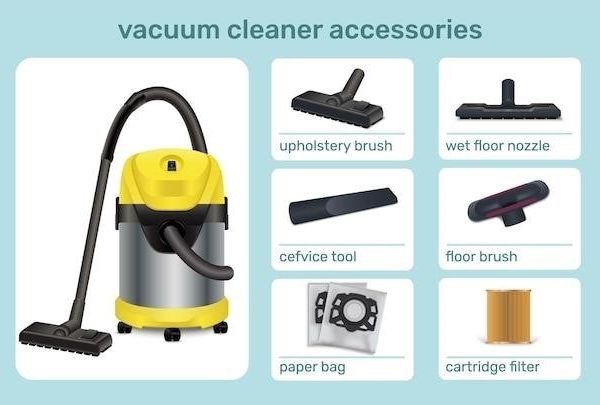Johnson Controls A419 Series Electronic Temperature Controls
The A419 series controls are single-stage‚ electronic temperature controls with a Single-Pole‚ Double-Throw. (SPDT) output relay. They feature a lockable.
A419 Series Electronic Temperature Controls with NEMA 1 or NEMA 4X Watertight Enclosures Installation Guide ー PENN Controls ー WEL11A ー A99BA ー BKT287 …
Setpoint (SP) establishes the temperature value at which the equipment is switched on or off‚ depending on the user selected mode of operation. […]
Overview
The Johnson Controls A419 Series Electronic Temperature Controls are a versatile and reliable solution for controlling temperature in a wide range of applications; These controls are designed for use in both residential and commercial settings‚ offering precise temperature regulation and energy efficiency. The A419 series features a user-friendly interface‚ adjustable settings‚ and robust construction‚ making them an ideal choice for HVAC systems‚ industrial processes‚ and other temperature-sensitive environments.
The A419 controls are available in two enclosure types⁚ NEMA 1 for indoor use and NEMA 4X for outdoor or harsh environments. They are also equipped with a single-pole‚ double-throw (SPDT) output relay‚ which allows them to control a variety of heating and cooling equipment. The controls feature a lockable display‚ preventing unauthorized adjustments to the settings. The A419 Series Electronic Temperature Controls provide a comprehensive and reliable solution for temperature control‚ offering a balance of functionality‚ ease of use‚ and durability;
The A419 control is set at the factory to display in Fahrenheit temperature units. To convert to Celsius units‚ press the UP amp;. Down buttons simultaneously. This allows for flexibility in accommodating different temperature scales based on user preferences and regional standards.
The A419 Series Electronic Temperature Controls are a versatile and reliable solution for temperature control‚ offering a balance of functionality‚ ease of use‚ and durability. Their features‚ including the selectable temperature units‚ make them a suitable choice for diverse applications and environments.

Technical Bulletin
The A419 Series Electronic Temperature Controls are designed for precise temperature control in a variety of applications. They offer a range of features and functionalities that make them suitable for both residential and commercial settings. The technical bulletin provides detailed information about the A419 controls‚ encompassing their specifications‚ operating principles‚ and installation guidelines. The bulletin is an essential resource for understanding the technical aspects of the A419 controls‚ enabling proper installation‚ configuration‚ and troubleshooting.
The technical bulletin covers key aspects of the A419 controls‚ including their operating modes‚ setpoint and differential adjustments‚ anti-short cycle delay‚ temperature offset‚ output relay specifications‚ enclosure types‚ and temperature unit selection. It also provides insights into the controls’ electrical characteristics‚ wiring diagrams‚ and troubleshooting procedures. The bulletin is a comprehensive guide for technicians‚ engineers‚ and installers‚ providing them with the necessary information to effectively utilize the A419 controls in various applications.
The A419 Series Electronic Temperature Controls are designed for precise temperature control in a variety of applications. They offer a range of features and functionalities that make them suitable for both residential and commercial settings. The technical bulletin provides detailed information about the A419 controls‚ encompassing their specifications‚ operating principles‚ and installation guidelines. The bulletin is an essential resource for understanding the technical aspects of the A419 controls‚ enabling proper installation‚ configuration‚ and troubleshooting.
Installation Guide
The A419 Series Electronic Temperature Controls Installation Guide is a comprehensive document that provides step-by-step instructions for the installation and configuration of these controls. It covers all aspects of the installation process‚ from preparing the installation site to wiring the control and connecting it to the equipment. The guide is designed to be user-friendly and includes clear diagrams‚ illustrations‚ and detailed explanations to facilitate the installation process.
The installation guide begins by outlining the necessary tools and materials required for the installation. It then provides detailed instructions on mounting the control in the desired location‚ ensuring proper ventilation and accessibility. The guide also covers the process of connecting the control to the power supply and to the equipment being controlled‚ including the HVAC system or other temperature-sensitive devices. The installation guide provides detailed instructions on how to wire the control‚ ensuring proper connections are made to the thermostat‚ the output relay‚ and any other necessary components.
Once the control is wired‚ the guide provides instructions on how to configure the control settings‚ including setting the desired temperature‚ selecting the operating mode‚ and adjusting the differential and anti-short cycle delay. It also covers how to test the control after installation to ensure it is functioning correctly and provides troubleshooting tips for common issues that may arise during the installation process.
Features and Benefits
The Johnson Controls A419 Series Electronic Temperature Controls boast a range of features and benefits that make them a reliable and versatile choice for a variety of temperature control applications. Their design incorporates advanced technology and user-friendly functionality‚ providing precise temperature regulation and enhanced system performance. One key feature is the adjustable setpoint and differential‚ allowing users to customize the temperature control parameters to suit specific needs and optimize energy efficiency.
The A419 Series controls also feature an adjustable anti-short cycle delay‚ which prevents frequent cycling of the equipment and reduces wear and tear on components. The temperature offset feature allows for fine-tuning of the control’s temperature readings‚ ensuring accurate and consistent temperature maintenance. The controls are equipped with a single-pole‚ double-throw (SPDT) output relay‚ providing reliable switching for a variety of equipment types.
The A419 Series controls offer a choice of NEMA 1 or NEMA 4X watertight enclosures‚ providing protection against environmental factors and ensuring long-term performance. The controls are factory-set to display temperature in Fahrenheit units‚ but can be easily converted to Celsius units by pressing the UP and DOWN buttons simultaneously. These features contribute to the overall reliability‚ versatility‚ and user-friendliness of the A419 Series Electronic Temperature Controls‚ making them a suitable choice for a wide range of applications.
Modes of Operation
The Johnson Controls A419 Series Electronic Temperature Controls offer two primary modes of operation⁚ heating and cooling. These modes provide flexibility in controlling the temperature of a space‚ allowing for precise regulation based on the desired comfort level. In heating mode‚ the control activates the heating equipment when the temperature falls below the setpoint. Conversely‚ in cooling mode‚ the control activates the cooling equipment when the temperature rises above the setpoint.
The setpoint‚ a key parameter in both modes‚ represents the desired temperature. The differential‚ another important setting‚ defines the temperature difference between the setpoint and the actual temperature at which the equipment is switched on or off. For instance‚ if the setpoint is 70°F and the differential is 2°F‚ the heating equipment will switch on when the temperature drops to 68°F‚ and the cooling equipment will switch on when the temperature rises to 72°F. This differential ensures that the equipment cycles on and off efficiently to maintain the desired temperature range.
The A419 Series controls also feature an adjustable anti-short cycle delay‚ which helps prevent the equipment from cycling on and off too frequently‚ reducing wear and tear and optimizing energy efficiency. This delay ensures that the equipment remains on for a predetermined time period‚ even if the temperature briefly fluctuates within the differential range‚ ensuring consistent and stable temperature control.
Setpoint and Differential
The setpoint (SP) is a crucial parameter that determines the desired temperature for the controlled space. It represents the target temperature at which the heating or cooling equipment will be activated or deactivated‚ depending on the selected mode of operation. The setpoint is adjustable‚ allowing users to customize the temperature according to their preferences and requirements.
The differential‚ also known as the deadband‚ plays a vital role in controlling the temperature cycling of the equipment. It defines the temperature difference between the setpoint and the actual temperature at which the equipment switches on or off. The differential is a key factor in preventing excessive cycling of the heating or cooling system‚ ensuring smooth and consistent temperature control.
For instance‚ if the setpoint is set to 70°F and the differential is 2°F‚ the heating system will switch on when the temperature drops to 68°F and switch off when the temperature rises to 70°F. Similarly‚ the cooling system will switch on when the temperature rises to 72°F and switch off when the temperature drops to 70°F. This differential ensures that the equipment operates efficiently and avoids unnecessary cycling‚ optimizing energy consumption and minimizing wear and tear.
Adjusting the differential allows users to fine-tune the temperature control based on their specific needs. A wider differential will result in less frequent cycling‚ while a narrower differential will provide more precise temperature control.
Anti-Short Cycle Delay
The anti-short cycle delay feature is designed to prevent the heating or cooling equipment from cycling on and off too frequently‚ which can lead to excessive wear and tear and inefficient energy consumption. This delay mechanism ensures that the equipment remains on or off for a minimum period of time‚ regardless of minor fluctuations in temperature.
The anti-short cycle delay is particularly important in situations where the temperature is changing rapidly‚ such as when the system is initially starting up or when there are sudden changes in external conditions. Without this delay‚ the equipment might turn on and off repeatedly‚ even for small temperature variations‚ resulting in wasted energy and increased wear on the system.
By implementing a delay‚ the control allows the equipment to operate for a longer duration before switching off‚ ensuring that the desired temperature is achieved and maintained effectively. This delay prevents the equipment from responding to minor temperature fluctuations and promotes smooth and efficient operation.
The anti-short cycle delay can be adjusted depending on the specific application and requirements. A longer delay might be suitable for systems with large thermal mass or when the temperature is changing slowly‚ while a shorter delay might be preferred for systems with smaller thermal mass or when the temperature is changing rapidly. This flexibility allows users to optimize the anti-short cycle delay to suit the specific needs of their application.
Temperature Offset
The temperature offset feature on the Johnson Controls A419 series electronic temperature controls provides a mechanism to adjust the control’s setpoint relative to the actual temperature being sensed. This offset allows for fine-tuning the control’s operation to account for variations in the environment or the system’s response. It essentially creates a difference between the temperature displayed on the control and the actual temperature at which the equipment is switched on or off.
For instance‚ if the control is sensing a slightly higher temperature than the desired setpoint due to factors like heat generated by equipment in the vicinity‚ the temperature offset can be used to compensate for this discrepancy. By adding a negative offset‚ the control will effectively lower the setpoint‚ allowing the equipment to cycle on earlier to maintain the desired temperature. Conversely‚ if the control is sensing a slightly lower temperature than the desired setpoint‚ a positive offset can be applied to raise the setpoint‚ delaying the activation of the equipment.
The temperature offset feature is particularly useful in applications where the actual temperature being sensed might not accurately reflect the desired temperature in the controlled space. This could be due to factors like uneven heat distribution‚ air flow patterns‚ or the location of the temperature sensor. By adjusting the offset‚ users can ensure that the control operates based on the desired temperature in the controlled space‚ rather than the temperature being sensed at the sensor location;
The temperature offset can be adjusted through the control’s interface‚ allowing users to fine-tune the control’s operation to achieve optimal performance and comfort. This adjustment offers a convenient way to compensate for variations in the environment or system behavior without altering the setpoint itself.
Output Relay
The Johnson Controls A419 series electronic temperature controls utilize a Single-Pole‚ Double-Throw (SPDT) output relay to control the connected heating or cooling equipment. This relay acts as a switching mechanism‚ responding to the control’s temperature sensing and logic to activate or deactivate the equipment. It essentially acts as a bridge between the control’s decision-making process and the actual operation of the heating or cooling system.
The SPDT relay has three terminals⁚ one common terminal and two normally open (NO) terminals. When the control determines that the equipment needs to be activated‚ it energizes the relay coil‚ causing the common terminal to connect to one of the NO terminals. This connection completes the circuit‚ allowing current to flow through the equipment and initiating its operation. When the control decides to deactivate the equipment‚ it de-energizes the relay coil‚ breaking the connection between the common terminal and the NO terminal. This interruption of the circuit stops the flow of current‚ effectively switching off the equipment.
The use of an SPDT relay provides flexibility in controlling the equipment. It allows for independent control of both heating and cooling circuits‚ enabling the control to activate or deactivate either one as needed. This is particularly beneficial in applications where both heating and cooling functions are required to maintain the desired temperature range.
The A419 series controls feature a lockable output relay‚ which adds an extra layer of safety. This lockable feature prevents unauthorized access to the relay terminals‚ helping to ensure the integrity of the control system and preventing accidental or intentional tampering.
Enclosure Types
The Johnson Controls A419 series electronic temperature controls are available in two enclosure types‚ designed to meet different environmental requirements and application needs. These enclosure types ensure the control’s durability‚ protection against external elements‚ and suitability for various installation environments.
The first enclosure type is NEMA 1‚ also known as general purpose. This type of enclosure provides basic protection against dust‚ dirt‚ and light splashing water. It is suitable for indoor installations where the control is not exposed to harsh weather conditions or excessive moisture. NEMA 1 enclosures are commonly used in residential and commercial buildings‚ where the control is typically mounted on a wall or in a control panel.
The second enclosure type is NEMA 4X‚ also known as watertight. This type of enclosure offers a higher level of protection against environmental elements‚ including rain‚ snow‚ sleet‚ and ice. It is designed to withstand harsh weather conditions and is suitable for outdoor installations or locations where the control may be exposed to moisture or splashes. NEMA 4X enclosures are often used in industrial settings‚ where the control may be installed in areas exposed to water‚ chemicals‚ or other hazardous materials.
The choice of enclosure type depends on the specific application and the environmental conditions where the control will be installed. By selecting the appropriate enclosure type‚ users can ensure that the control is adequately protected and performs reliably in its intended environment.
It is important to note that while the NEMA 4X enclosure provides a higher level of protection‚ it may also be more expensive than the NEMA 1 enclosure. When choosing an enclosure type‚ users should carefully consider the specific requirements of the application and weigh the benefits of increased protection against the cost.



